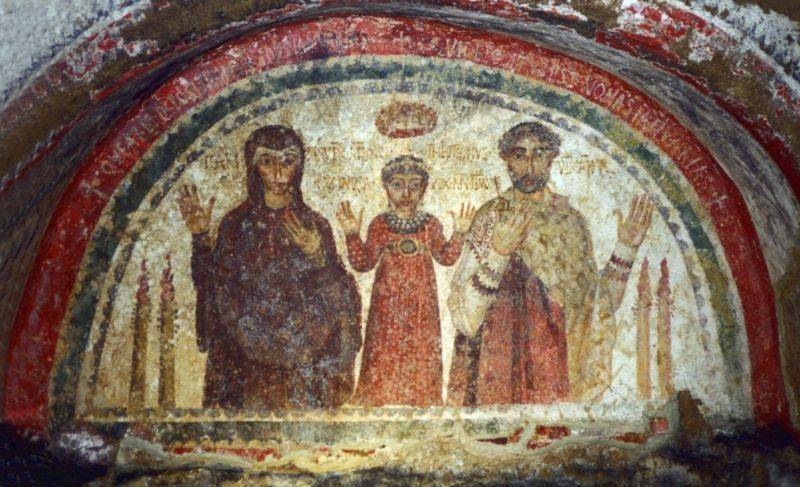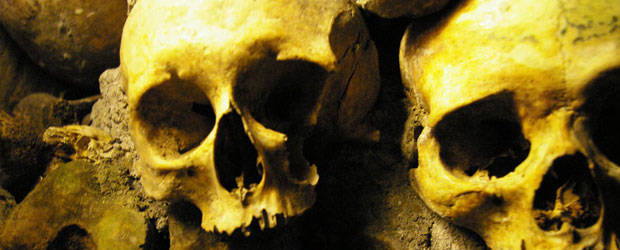The Mystery of Underground Naples
As Erri De Luca says in the interview with Letizia Airos, to really see Naples you need a good friend. And there could hardly be a better friend, and guide, than Msgr. Gennaro Matino. A professor of theology and a prolific essayist, Msgr. Matino is a longtime friend and colleague of Erri De Luca himself. Sharing a deep interest in the language and symbolism of the Scriptures, they have written three books together. So when we met Msgr. Matino in his church’s office, sitting by his computer and surrounded by so many books, and asked him to be our friend in Naples, our conversation was the natural continuation of the one we began with Erri De Luca.
A different approach
“Naples can be visited in so many ways,” begins Msgr. Matino. “Do you know which city has the largest number of domes and bell towers in Europe? Naples does, and it’s second only to Jerusalem in the world. Putting it this way, it would mean visiting Naples by only sight, and by looking up for most of the time. But Naples should not be seen with ‘one’s nose in the air,’ only admiring the domes, the Baroque ceilings, and the blue sky. The usual tourist itineraries in Naples include famous art work and the sea, and most guides already have those covered. It’s all well and good for those who come to Naples to visit the Capodimonte Museum, the Archaeological Museum, the treasure of San Gennaro, and the great churches of Santa Chiara, San Lorenzo, and the Duomo. And passing through the popular streets of Mezzocannone, Spaccanapoli, and San Gregorio Armeno, one will be fascinated by the street life and the nativity scenes on display throughout the year. But there is more to see, and the guides don’t often discuss it.”
The subterranean city
And where would our Neapolitan friend take us instead? “Naples underground. Within thecity’s bowels, there is everything from Byzantine mosaics to the ruins of ancient shops, all sorts of treasures preserved in tufo, the stone out of which Naples is made. It’s a soft stone that at the same time is very durable.”
This is a different sort of trip, with various odors, colors, and sounds that we are not used to above ground, in the realm of Naples that is sun-drenched and rowdy. “Yes, this is subterranean Naples. The Fontanelle Cemetery, for example, is the only one of its kind. It’s the place for a popular cult of the dead that goes far beyond the religious. There are hundreds of skulls and bones preserved, one on top of the other. They are the memory of ancient tragedies such as cholera and the plague that have infested Naples over the centuries.
These poor bones have been left to the mercy of a people who tell their own stores through them. Families ‘adopt’ the skulls of the unknown, care for them, clean them, and preserve them as if they were their own ancestors. There even those who interpret the future through the skulls….”Then there’s the beauty of the catacombs. Many tourists think that the catacombs are only located in Rome, where they tell the story of Christian persecution of under Nero.
“This is not the case. In pre-Christian Naples, there already existed an entire underground city that had its own centers. These ‘centers’ were the two large catacombs of San Gennaro and San Gaudioso. They are, above all, cemeteries and places of worship, but also shelters against persecution. San Gennaro died in 305 during the persecutions of the Emperor Diocletian.”
The scared and the profane
And here is truly the entire Neapolitan mélange, combining both the sacred and the profane. “Of course. The charm of antiquity, popular faith, and mystery all reside here. And at the same time, in the catacombs you’ll find the cult of the phallus, of fertility, worship of Priapus. These are things that, outside of Naples, I’ve only seen in India…. All this is part of the lure of subterranean Naples. Have I convinced you?”
Our Neapolitan friend has convinced us. And so we hope to have convinced our readers on their next trip to Naples.









































i-Italy
Facebook
Google+
This work may not be reproduced, in whole or in part, without prior written permission.
Questo lavoro non può essere riprodotto, in tutto o in parte, senza permesso scritto.